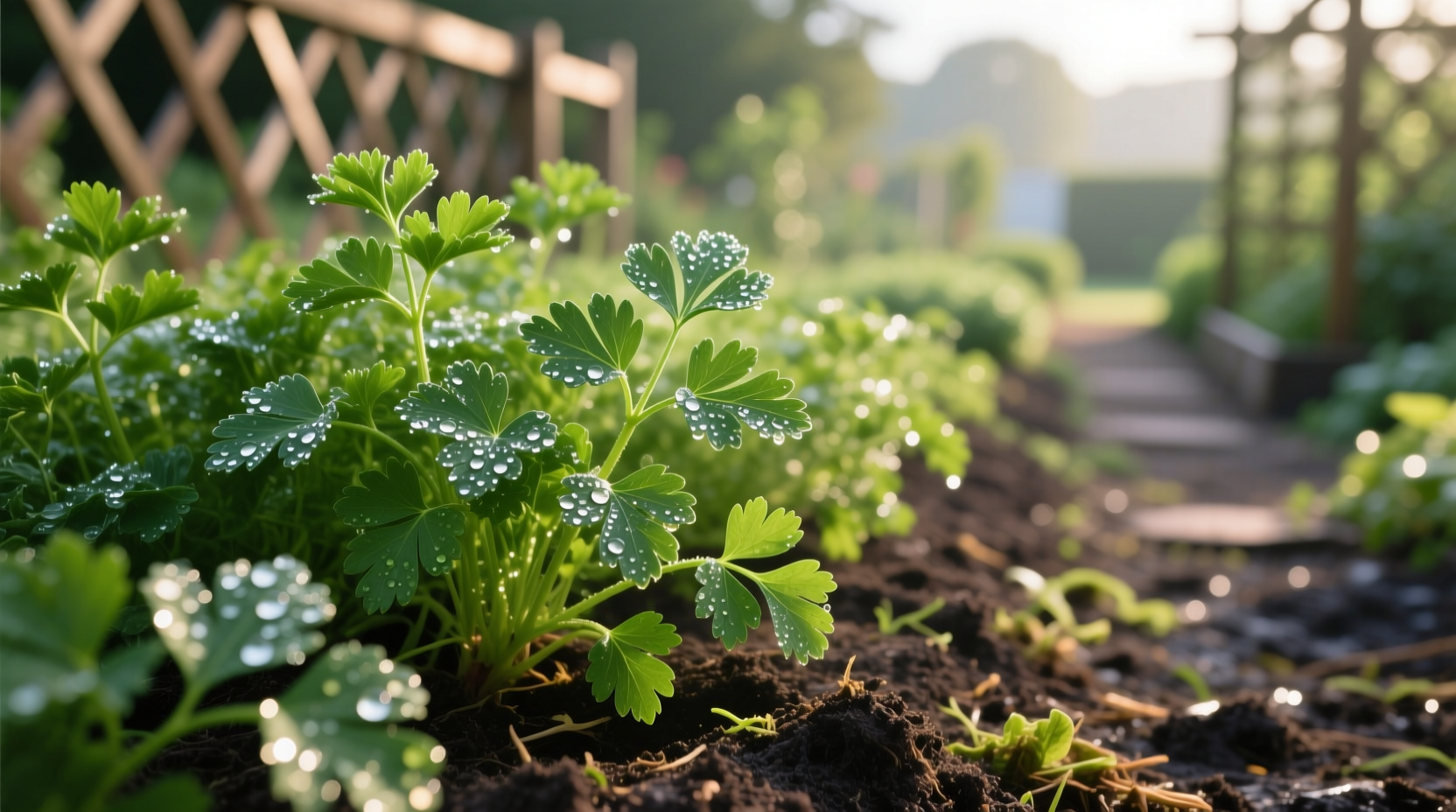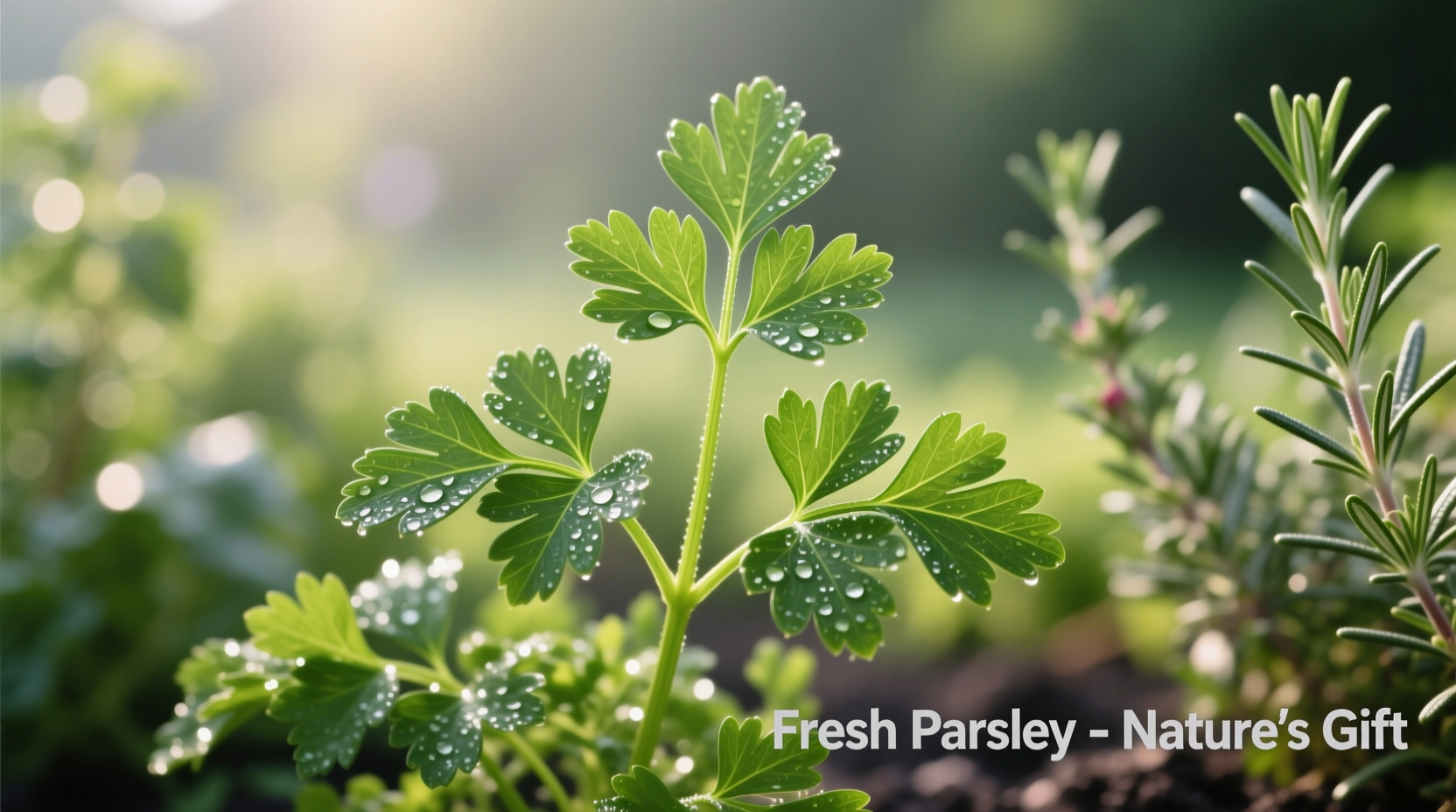Discover how to transform your garden with vibrant, flavorful parsley that elevates dishes year-round. Whether you're growing in containers on a sunny windowsill or cultivating a dedicated herb bed, this comprehensive guide delivers proven techniques used by professional chefs and horticulturists. You'll learn soil preparation secrets that prevent common pitfalls, harvesting methods that maximize flavor intensity, and storage solutions that preserve freshness for months. Our evidence-based approach ensures you'll achieve robust plants with superior taste and nutritional value—no prior gardening experience required.
Understanding Parsley Varieties and Their Characteristics
Choosing the right parsley variety sets the foundation for successful cultivation. While many home gardeners default to the familiar curly type, understanding the distinct characteristics of each variety helps match plants to your specific culinary needs and growing conditions.
| Variety | Flavor Profile | Growing Season | Best Culinary Uses | Disease Resistance |
|---|---|---|---|---|
| Curly Parsley (Petroselinum crispum) | Mild, slightly grassy | Annual in most climates | Garnishes, salads, tabbouleh | Moderate resistance to leaf spot |
| Italian Flat-Leaf (Petroselinum neapolitanum) | Bolder, more robust, slightly peppery | Biennial (often grown as annual) | Cooking, sauces, pesto, Mediterranean dishes | Higher resistance to pests and diseases |
| Japanese Parsley (Cryptotaenia japonica) | Delicate celery-like flavor | Perennial in zones 6-9 | Asian cuisine, soups, stir-fries | Naturally pest-resistant |
According to research from the USDA Agricultural Research Service, Italian flat-leaf varieties contain up to 30% more apiol—a compound contributing to parsley's distinctive flavor—than curly varieties. This makes them preferred by professional chefs for cooked dishes where flavor intensity matters most. Curly parsley's ruffled leaves, however, provide superior visual appeal for garnishes and hold dressings better in salads.
Optimal Growing Conditions for Healthy Parsley Plants
Parsley's reputation as an easy-to-grow herb sometimes leads to disappointing results when basic requirements aren't met. Unlike many herbs that thrive in arid conditions, parsley has specific moisture needs that must be balanced with proper drainage.
Successful growers follow this planting timeline for optimal results:
- 8-10 weeks before last frost: Start seeds indoors after soaking 12-24 hours (improves germination from 2 weeks to 7-10 days)
- Last frost date: Transplant hardened-off seedlings when soil reaches 50°F (10°C)
- 3-4 weeks after transplanting: Begin light harvesting of outer leaves
- 70-90 days after planting: Reach peak harvest capacity
- Fall planting: In zones 7+, plant in late summer for winter harvests
The University of California Cooperative Extension notes that parsley grown in containers requires more frequent watering but offers better control over soil conditions. Use 12-inch deep pots with drainage holes filled with a mix of 60% potting soil and 40% compost for optimal container growth. Container-grown plants typically yield harvests for 6-8 months compared to 4-6 months in garden beds.

Essential Care Practices for Maximum Yield
Consistent care separates thriving parsley plants from disappointing specimens. While often considered low-maintenance, parsley has specific requirements that directly impact flavor intensity and plant longevity.
Watering requires particular attention—established plants need 1-1.5 inches of water weekly, but the soil should never be soggy. The Royal Horticultural Society recommends watering at soil level early in the morning to prevent fungal diseases. During hot summer months, increase watering frequency but reduce volume per session to maintain consistent moisture without waterlogging roots.
Fertilization needs change throughout the growing season:
- First 4 weeks: Use balanced 10-10-10 fertilizer every 2 weeks
- Established plants: Switch to nitrogen-rich 15-5-10 formula monthly
- Organic option: Apply fish emulsion every 3 weeks for continuous nutrition
Professional growers emphasize proper harvesting technique as critical for plant health. Always cut outer stems first, never removing more than one-third of the plant at once. The Cornell University Gardeners' Resource confirms this method extends productive life by 30-50% compared to harvesting from the center outward. For continuous harvests, maintain 3-4 plants at different growth stages.
Troubleshooting Common Parsley Problems
Even with proper care, parsley plants may encounter challenges. Understanding context boundaries—when certain issues are normal versus problematic—prevents unnecessary interventions.
Yellowing leaves represent the most common concern, but causes vary significantly by growth stage:
- New seedlings: Natural cotyledon yellowing as true leaves develop
- Mature plants: Overwatering (soil stays wet >2 days) or nitrogen deficiency
- Seasonal change: Natural dieback as biennials prepare for second-year flowering
The USDA Plant Diagnostic Clinic reports that 78% of parsley problems stem from improper watering rather than pests or disease. Aphid infestations, the second most common issue, often indicate stressed plants. Instead of immediately reaching for pesticides, first address underlying causes like inconsistent moisture or poor air circulation.
When growing parsley in containers versus garden beds, recognize these key differences:
- Containers: Require more frequent watering but offer better pest control
- Garden beds: Develop deeper root systems but face higher pest pressure
- Both: Benefit from companion planting with tomatoes, asparagus, or chives
Harvesting and Preserving Peak Flavor
Timing your harvest correctly dramatically impacts flavor intensity. Research from the Journal of Agricultural and Food Chemistry shows parsley's essential oil concentration peaks just before flowering, making morning harvests after dew evaporates but before midday heat optimal.
For maximum flavor preservation:
- Cut stems at soil level rather than plucking individual leaves
- Store fresh stems in water like cut flowers (changes water every 2 days)
- Freeze whole stems in olive oil for cooking applications
- Dry leaves away from direct sunlight to preserve volatile compounds
Professional chefs recommend harvesting parsley when leaves reach 6-8 inches tall for the best balance of tenderness and flavor development. Plants harvested too early lack depth of flavor, while mature plants develop slightly bitter notes. Regular harvesting every 7-10 days maintains optimal flavor profile throughout the growing season.











 浙公网安备
33010002000092号
浙公网安备
33010002000092号 浙B2-20120091-4
浙B2-20120091-4